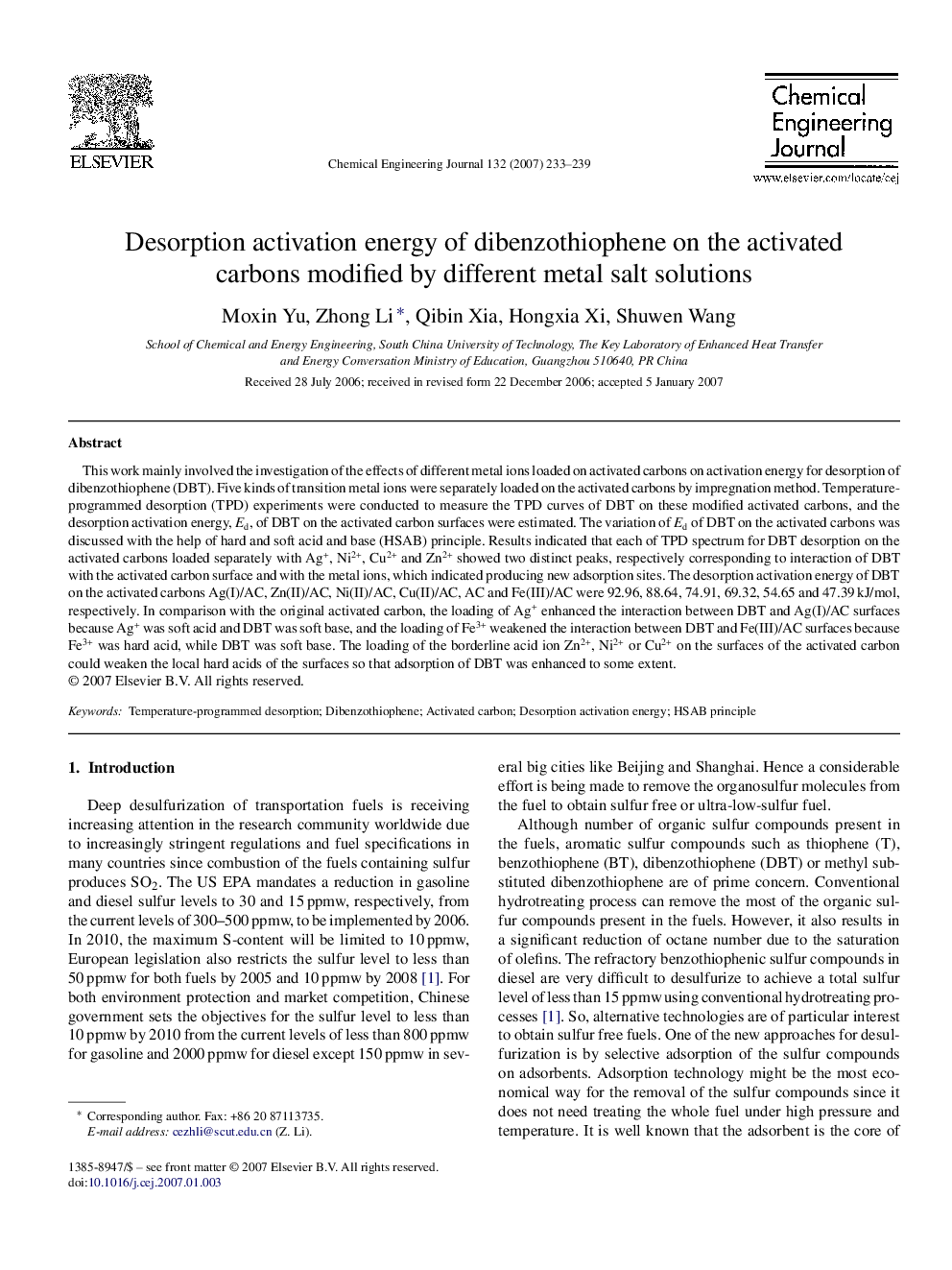| Article ID | Journal | Published Year | Pages | File Type |
|---|---|---|---|---|
| 153777 | Chemical Engineering Journal | 2007 | 7 Pages |
This work mainly involved the investigation of the effects of different metal ions loaded on activated carbons on activation energy for desorption of dibenzothiophene (DBT). Five kinds of transition metal ions were separately loaded on the activated carbons by impregnation method. Temperature-programmed desorption (TPD) experiments were conducted to measure the TPD curves of DBT on these modified activated carbons, and the desorption activation energy, Ed, of DBT on the activated carbon surfaces were estimated. The variation of Ed of DBT on the activated carbons was discussed with the help of hard and soft acid and base (HSAB) principle. Results indicated that each of TPD spectrum for DBT desorption on the activated carbons loaded separately with Ag+, Ni2+, Cu2+ and Zn2+ showed two distinct peaks, respectively corresponding to interaction of DBT with the activated carbon surface and with the metal ions, which indicated producing new adsorption sites. The desorption activation energy of DBT on the activated carbons Ag(I)/AC, Zn(II)/AC, Ni(II)/AC, Cu(II)/AC, AC and Fe(III)/AC were 92.96, 88.64, 74.91, 69.32, 54.65 and 47.39 kJ/mol, respectively. In comparison with the original activated carbon, the loading of Ag+ enhanced the interaction between DBT and Ag(I)/AC surfaces because Ag+ was soft acid and DBT was soft base, and the loading of Fe3+ weakened the interaction between DBT and Fe(III)/AC surfaces because Fe3+ was hard acid, while DBT was soft base. The loading of the borderline acid ion Zn2+, Ni2+ or Cu2+ on the surfaces of the activated carbon could weaken the local hard acids of the surfaces so that adsorption of DBT was enhanced to some extent.
